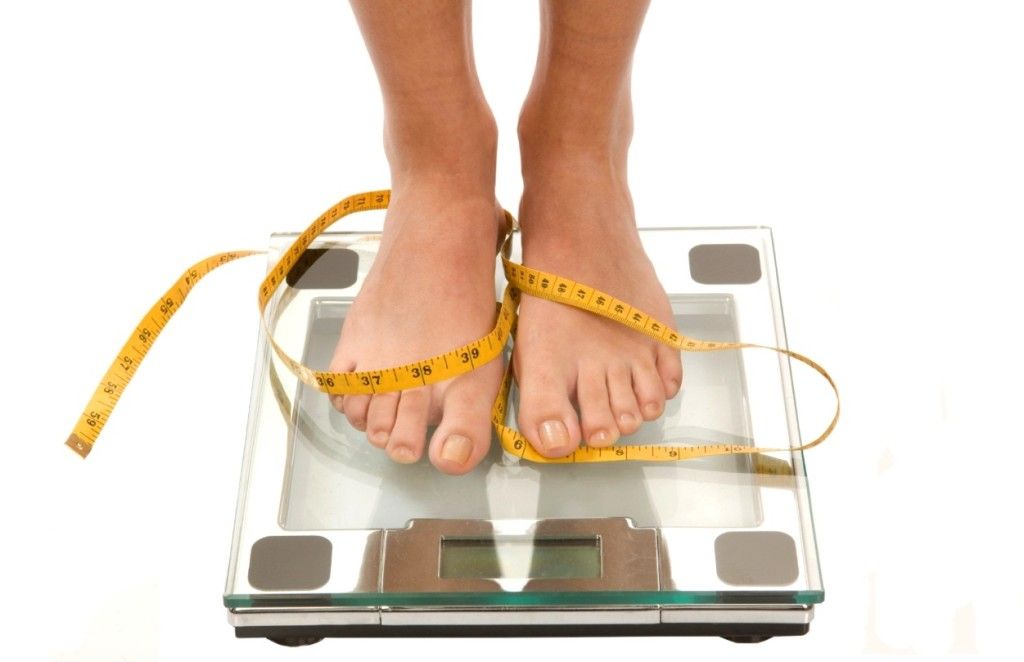
Train your metabolism
Content of the article:
Diet and food … how many conflicting theories. Everyone is in search of the missing link, some magical recipe that gives the key to losing weight. Every time science discovers something new, jets of ink (or better characters) pour into the ocean of cobwebs … and strictly every summer we continue to see the same tons of parrots on the beaches.

FROM” DIET OF THE INTERNAL MOTHER “TO NUTRIGENETICS
In a brief history of food science, we start with calories and yuan (as if it were an oven) and then we categorize between simple / complex carbohydrates, glycemic index, glycemic load, hormone control (glucagon / insulin), then insulin load , pH and alkaline foods, chronobiology, anti-nutrients, microbiome … and addition and continuation. However, most people remain the same as always: the fat remains fat, and the weak remain slim … A question of genetics? …
We are used to the fact that every time a new variable appears, everything that was worth before is no longer useful. Before calories were the only thing that mattered (a calorie is a calorie, they said) and then they weren’t counted at all (hormonal control is what matters, they said) to now again be the only thing that matters (the last method is flexible diet).
So what are we left with. Are calories or hormones counted?
Everything matters! The main problem is that when we do not have knowledge, we easily fall victim to marketing … and marketing is based on extremism, creates a problem and offers YOUR solution.
How many times have we heard simplification:
“Eat more than you spend, then you gain weight – Eat less than you spend and lose weight.”
How simple is the body, how EASY everything is and how RELIABLE are people who “eat more” … Right?
Obviously, there are obsessive liars who quietly eat junk food or in broad daylight, others sabotage their diet without realizing it. An English television program called “Fat Liars” hid the camera from overweight people who could not lose weight and found that most “did not realize” that:
- pecked shit between meals
- I changed clothes
- Misconceived food, food abuse
Obviously, there are people who need psychological counseling … but what about those who are loyal to their regime and still cannot achieve their goal? What about those who do lose weight with a certain diet, but then regain all of the lost weight, or even gain more and more with each new diet cycle?
ALL TRAINS

If your best press pot is 80 kg and your goal is to gain 130 kg … what would you do? Would you ALREADY put yourself below 130 kg, trying not to die, trying until you succeed, or would you follow a logical and structured sequence of procedures that were able (with TIME) to bring you the opportunity to lift them?
Well, curious about weight loss, the first approach is “I want it TODAY FOR YESTERDAY”:
Any diet always starts with the premise that SOMETHING TO REMOVE (remove calories, remove carbohydrates, remove certain foods), but the effectiveness of one approach or another is almost never considered to be largely dependent on our METABOLIC CAPACITY – if we have “Ferrari” or “500” – and ultimately how to TRAIN METABOLISM to make it more efficient.
This misunderstanding leads us to think that when a diet isn’t working it’s because it doesn’t adapt to the US (we all like to feel “unique and special”), our biotype, or our Pleistocene descendants. Some even swallow the nonsense that it doesn’t match their blood type (actually determined by ONE genome in 10,000) and may not be their zodiac sign either, so they start following strange theories and DELETING SOMETHING – usually unhealthy food – some improvement will come
… but then what? What to do when we stagnate? … Read on!
Others start counting “blocks”, add “dots” or measure urine pH … others still become animals and stop eating meat, thinking they are going to save the planet. The Paleolithic begins to reject grains, legumes and dairy products (for example, why they are not “paleo”) like the plague, and later introduces the Paleo-island, Paleolazan and Paleopizzas.
The sense of kinship inherent in our nature makes the Diet often become a kind of RELIGION, where it becomes a priority to convert others, and “to redeem them for your sins.” And to be sure that YOUR approach is the best, you need to succeed and excel at it, as evidenced by the well-known effect of PLACEBO. Many people don’t know that there is also the NOZEBO effect (all diets emphasize how harmful the foods they exclude), which often catches us in a certain focus, literally making us sick every time we try to get out of it.
A prime example is PALEO versus VEGAN, who claim to radically improve energy and health through diet, while at the same time feel sick by eating excluded foods (you must specialize in enzymatic, but we would stray from topics).
METABOLIC INSTALLATION POINT
The main problem is that a huge MOST ignores the ADAPTIVITY and homeostatic balance of the body. In fact, our body composition is regulated by over 200 factors, and focusing on ONE (calories) or maximum TWO (carbohydrates or fats) was not very smart at the time when nature created metabolic thermometers to maintain homeostasis. Most importantly, LEPTIN (an adipokine that is influenced by glucose levels, which regulates metabolism through its function on thyroid hormones), is found inside fat cells, which, when filled, allow their increase, while when they are emptied, metabolism substances … falls!
This means that, faced with rapid initial weight loss in the first few weeks, it will soon be stagnant. Once we have reached a certain level of fat content (called the METABOLIC SETTING POINT), the body DOES NOT WANT to continue to decline, no matter how much we continue to cut and cut … our body has readjusted its homeostatic balance, adjusting to new circumstances: it seems to be telling us ” you don’t give me, I don’t burn. ”
For this reason, 2 fundamental factors are especially important:
- TIME invested for weight loss
- Our Diet Story Before Weight Loss
ESE TIME UNKNOWN
It is very expensive (and with interest) to rush into starting a weight loss program – this is the worst thing we can do. The faster the weight loss, the greater the loss of muscle mass and the faster we will trigger the mechanisms of energy conservation. If, in addition, as usual, the rapid loss is due to the sudden removal of carbohydrates, you act directly on another metabolic thermometer: the liver. The more the hepatocyte (liver cell) is full of glycogen, the more it binds to the brain to maintain a high metabolic rate, and vice versa, the more empty it is, the more it reports increased fat oxidation. The latter gives good results in the short term because we oxidize more triglycerides (which increase normal weight loss associated with water and glycogen), but on the other hand, I will oxidize less and less fat in the long term, due to decreased metabolism substances.
For this reason, it is necessary to schedule a TIME calendar that marks the loss of 0.5% to 1% of our body weight per week. A girl weighing 60 kg should lose no more than 300/600 g per week, so to remove 5 kg, she should spend from 9 to 16 weeks. To avoid falling into the adipocyte / hepatocyte anxiety trap, two approaches are often used: diets that maintain high levels of carbohydrates (which are now becoming trendy) and cyclic diets with carbohydrate supplements every 4-5 days.
What we are today is the result of what we did yesterday
In the field of nutrition, it is known that a caloric deficit of 10-20% is required to develop a weight loss program, which is theoretically correct. The problem is that this will work great with someone who has a high metabolic capacity (for example, whose normocaloric quota is, for example, 3000 or 3500 kcal), since they will be able to do several 10% contractions in TIME and without fasting. or loss of the ability to benefit, lose weight without stagnation within 6-8 months.
But if we are talking about a subject who for any reason (yo-yo diets, sedentary lifestyle, fasting, cornet diet, etc.) maintains homeostatic balance with only 1800-2000 kcal (or less) ) things get more complicated.

Reducing the same 10% will initially lead to weight loss (4-6 weeks), although how long do you think he can continue to lose weight and maintain his psychophysical efficiency? There are women who eat 700-800 calories and are still overweight. What to do then?
For this reason, our HISTORY becomes especially important, that is, PRIOR strategy before the phase of losing weight. Our goal should be to increase the METABOLIC ITEM RATING from 500-1000 kcal (within 4-6 months) so that after several cycles of weight loss / recovery (metabolic dump) a hypothetical subject of 2000 kcal could achieve a metabolic capacity of 4000 kcal. so that each hypocaloric phase starts at a definitely higher level.
Obviously, in this whole process, strength training with WEIGHTS becomes crucial:
- During the METABOLIC LOSS phase, because our goal will be to increase lean mass / strength / macronutrients / calories in the most gradual way possible, while keeping the fat content stable at 10-12% for men and 17-19% for women, For example, if your starting point is 75 kg with a fat content of 10% and a homeostatic balance of 2000 kcal, your goal would be to reach 80 kg without exceeding 12%, increasing your hemostatic balance to 2500-3000 kcal over 3 or 4 months (TIME) … We are talking about a net increase in muscle mass of 3 kg, so we will have to follow a reasonable weight program (PLANNING), which aims to gradually increase the load that we handle.
- DURING THE SLIMMING PHASE, working with WEIGHTS is important to maintain ALL muscle mass (if we can continue to increase it even better), and with it the improvements achieved in comparison with metabolism. Those who underestimate the work with weights for weight loss are usually explained by the fact that they do not know about the existence of ANTAGONISM between a muscle cell (myocyte) and a fat cell (adipocyte). They both have the same glucose receptors (Glut-4). When we lose weight, adipocytes are filled with Glut-4, so if the muscle does not receive an adequate mechanical stimulus (LOAD), the fat cell predominates, taking up most of the glucose. In simple terms, we will use muscle mass to burn fat in order to survive … to the extent that we are losing weight, even though OBJECTIVE MEASUREMENTS show the disaster we have committed.
PLANNING AND GRADUAL PROGRESSION
I know very well that many will think: “Yes, yes, yes … this is what I do” and they will confuse everything that has been said so far with the typical BULKIN that follows the phase of definition and / or competition where we go to shit shit (see, for example, my experiment in comparison above) and then press, so that everyone rushes 2-3 months before the championship or the next “bikini operation”. In many cases, this leads to eating disorders like the bulimia / anorexia cycle, which ultimately disrupt our metabolism and make our “hit the spot” become more and more suffering and complicated.
Understanding that our bodies need PROGRESSION in order to successfully adapt to changes in stimuli is very easy when you delve deeper into Sale’s theory of supercompensation. In 1975, Garkavi and other researchers from the Rostov Cancer Institute (Russia) showed how the body adapts to different levels of stress:
If the stimulus was excessive, the typical resistance and depletion curve was tested (analyzed in Sale’s experiments using additional doses to death), while at lower doses (MEDIUM) the resistance phase lasted longer and below a certain level, the stimulus became resistant … But the most interesting thing is that if the incentives were progressive, from LOW to HIGH, the ability to resist would be much higher in terms of applying high incentives from the beginning.
Remember and remember this in the next lesson “SUPER-FUNCTIONAL-MEGA-ESPARTANO-MARIKVITA-EL-ULTIMO” …
Where to start
If you have taken a metabolic setpoint dose for some time, you should do the following:
- Learn to MEASURE OBJECTIVE (plikometer or other reliable devices)
- Find out your current normocaloric quota. Use an app such as MyFitnessPal and write down for 1 or 2 weeks everything you are used to eating now to help you maintain your weight. You will get your average weekly protein / carbohydrate / fat / calorie intake per week, and you will start making small changes from YOUR starting point.
- How many carbohydrates do you take? Regardless of your starting point, the goal is to increase your total consumption by 25-50 g every 1 or 2 weeks. For this, a very effective strategy is to consume cyclically, dividing it into 3 areas: HIGH carbohydrates for 1 or 2 days of intense training (or our weak point), MEDIUM carbohydrates for 2 more days of training, and LOW carbohydrates for other rest days. The important thing is that the weekly average rises gradually while maintaining a stable% body fat. At the end of each metabolic dump phase, we shouldn’t have gained more than 2-4% body fat … so this is no reason to eat junk food! The maximum carbohydrate ceiling that you can efficiently metabolize will also depend on the type of physical activity: the more lactic acid, the more glycogen it will require, and vice versa.
- How much fat do you ingest? If the body weight exceeds 0.7 g / kg, we must gradually reduce them in the FIRST STAGE. In extreme cases, when a low carbohydrate content is observed for a long time and has an affinity for lousy glucose, it is advisable to gradually reduce it to 0.3-0.4 g / kg. Without lipids, it will be easier to improve the affinity for carbohydrates … don’t worry about steroid hormones, you will increase the fat as soon as the metabolism rises again.
- How many PROTEINS do you take? If our current level is above 2 g / kg, we will have to gradually lower them as the amount of carbohydrates increases. Don’t worry about catabolism as the high carbohydrate contribution will protect us from muscle lysis and induce anabolism. During the definition phase, we will gradually increase the protein intake. Again, the contribution will vary depending on the type of training: the more anaerobic and the more myofibrillar ruptures, the greater the need, and vice versa.
- What are your current brands? Unless we follow a training program that allows us to increase the weight on the bar, increase the reps we do with a specific weight, or shorten the time we do. we are taking exercise … we are just wasting time. It is clear that what you get HERE will not give you HERE … give a chance to other more rational and structured approaches.
As you already read in this article, TIME and GRADUAL PROGRESSION are the keys to our sport, so who are the children “I want it today for yesterday”, if they are removed from the doping logic, they are not able understand ANYTHING of what we, NATURAL, do
